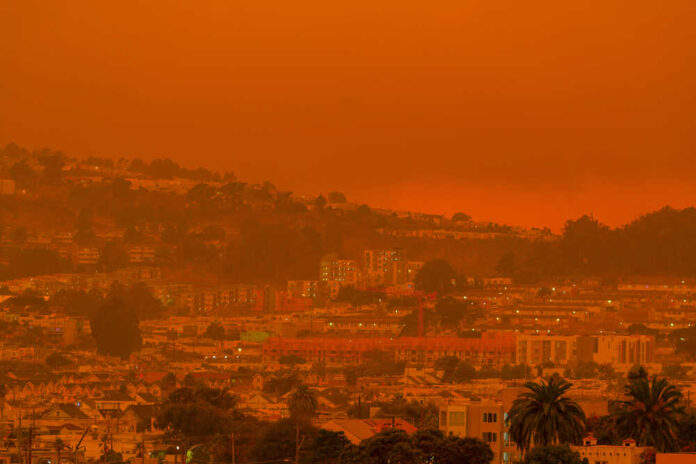
An ethereal haze blanketed much of the country’s northeast this week as wildfires in Canada poured smoke into the United States. The smoke led to poor visibility and striking views in major metro areas, including New York City.
Wildfires in Quebec and Nova Scotia sparked a large wave of smoke that covered much of New York and New England. The issue was made worse by a unique weather pattern that brought the soot into the United States.
The smoke is not expected to let up soon. There will likely be ongoing smoke and haze issues for the remainder of this week. Currently, there are at least 250 fires burning in Quebec.
The fires have displaced 20,000 Canadians.
Right over the Quebec border in Canada’s capital Ottawa, the haze level reached similar highs as in the U.S.
A number of Big Apple landmarks were shown in contrast by the ongoing haze, including the Statute of Liberty and the Empire State Building. Visibility in the city was reduced to a minimum, even during the day.
Not only did the smoke cause dramatic photographs of national landmarks, but it led to a number of closures, including a planned game between the New York Yankees and the Chicago White Sox.
CHOKE POINT: Iconic American landmarks are seen smothered in smoke as haze blankets the Northeast from the Canadian wildfires. https://t.co/Zn5u73NqA7 pic.twitter.com/OdHfnkun8t
— Fox News (@FoxNews) June 7, 2023
State and city officials urged people to stay indoors. New York City Mayor Eric Adams (D) urged people not to go outside unless necessary.
New York Gov. Kathy Hochul (D) wrote on Twitter for people to “take steps to stay safe.”
“Stay indoors if possible and limit strenuous activities,” she said.
The entire state is under a health advisory due to air quality except for the mountainous Adirondack region.
All planes at New York’s LaGuardia airport were grounded Wednesday.
A number of school activities were canceled due to the ongoing haze.
The National Weather Service set air quality alerts for much of the eastern part of the country. Furthermore, states far from Quebec and Nova Scotia, including South Carolina and Kansas, issued their own air quality warnings due to the ongoing issue.










